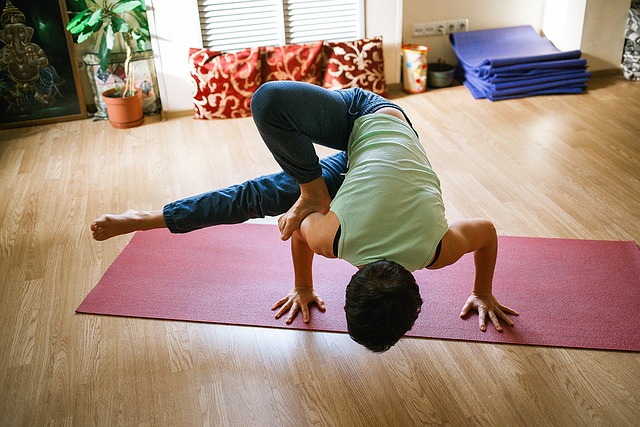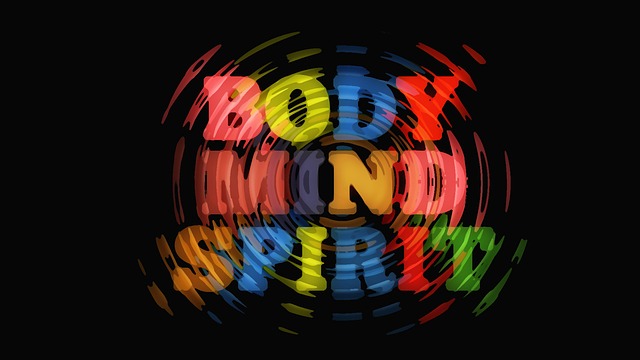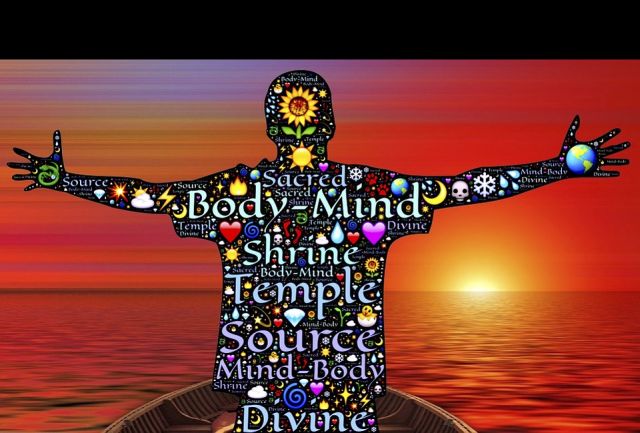Types of Yoga: Find the Right Yoga Style

Types of Yoga: Mind Body Union
Are you confused by all the types of yoga – Ashtanga, Iyenger, Vinyasa, Sivinanda, Nidra, Raja, and more? Choosing your type of yoga comes down to what you need for your body and mind
With any type of yoga, you can improve strength, flexibility, and balance. Yoga will also release tension in your body, quieten your mind, still your soul and create a feeling of peace and tranquility. Before you choose from types of yoga, consider your current fitness level. Like all exercise and mediation regimes, you will also need the right temperament and discipline to attain the goals you set for practising yoga – improvement takes work.
There are so many types of yoga being practiced today. The types of yoga vary on several dimensions. Finding which is right for you does not have to be that daunting. Rather than work from styles backwards, we suggest that you work from needs forwards. As a reminder the word yoga can be translated as “union,” “yoke,” or “balance.” – you are creating a union between mind and body – and will also find the balance between strength and flexibility. Find a type of yoga that builds that nexus between mind and body.
Choosing Types of Yoga
To choose the types of yoga that are right for you, you need to think about 3 questions:
- Do you want to improve your fitness and get in shape? There are a number of yoga styles that are more active – even vigorous – like Power Yoga, Ashtanga Yoga, or Bikram Yoga. These styles combine an athletic series of poses (often done in a flowing and set sequence) into a vigorous, total-body workout.
- Do you want to use yoga to deal with an injury or a chronic medical condition? Or are you older and out of shape? Or pregnant? There are a number of yoga styles that focus on alignment and work in a slower way and often using props. Here we are looking at styles like like Iyengar Yoga, Kripalu Yoga, Hatha Yoga or Viniyoga. These styles are much more about the poses than the sequencing of poses
- Do you primarily want to explore the mind-body union? Meditation can be a core part of yoga. Some styles of yoga make this much more a focal point. The most well known of these is Kundalini yoga where chanting is a core element. A style that focuses on breathing could also be useful like Sivananda Yoga.
What you will discover as you start looking for classes is that there is quite a lot of crossover between types of yoga and teachers. Having pinned down the broad need you are trying to meet – search out some classes and try them out. There will be a combination of style and teacher that will match what you need. You may need to try a few types of yoga and a few teachers to find your very own comfort zone. Then as your fitness levels increase and your aches and pains reduce, you may want to step up a level to a more active level as needed.
Types of Yoga
Looking at those 3 broad needs we suggest:
For strength and fitness and a modicum of mind-body work follow the power types of yoga
Power Yoga is hugely popular in health clubs and among athletes. It is one of the most athletic forms of yoga. Based on the sequence of poses in Ashtanga yoga, Power Yoga builds upper-body strength as well as flexibility and balance. Teachers lead classes that flow from one pose to the next without stopping to talk about the finer points of each pose. That way, students come away with a good workout as well as a yoga experience. If you’re new to yoga, it’s a good idea to take a few classes in a slower style of yoga first to get the feel for the poses. That’s because there’s less individual attention and more focus on moving through the Power Yoga class. Some studios call Power Yoga by different names: flow yoga, flow-style yoga, or vinyasa flow.
 Ashtanga Yoga is the preferred choice for athletes because it is heavy on developing strength and stamina but light on meditation . The poses are more difficult than those performed in other styles. Students move quickly from one pose to another in an effort to build strength and flexibility. This style is suitable for anyone in reasonable physical condition but should be avoided by those who are new to exercise. Even the “beginners” routines are a physically demanding workout. Ashtanga yoga takes students through a warming up of the body to “activate” the muscles. Students move from one pose to another in a continual flow and combine the inhale and exhale of the breath with movements. Ashtanga yoga is becoming very popular. Expect the teacher to move the students through a sequence of poses, which is practiced, until it is mastered to some degree and the fundamentals completely understood. Then the student moves on to practice another series of poses that are more difficult, but the foundations are the same. The series of poses involves weaving in a combination of standing, seated, backbends, inversions, balancing, and twisting poses into sun salutation poses which include a standing forward bend, upward dog, downward dog, and other poses. There is a focus on breath control and focal point of the eyes as the students do a specific prescribed series of poses, moving gracefully from one to another. It is very beneficial for the body to be warm and/or the room to be heated as one does ashtanga, this will help the muscles to be very flexible, and help the body avoid strains due to the physically demanding style of ashtanga.
Ashtanga Yoga is the preferred choice for athletes because it is heavy on developing strength and stamina but light on meditation . The poses are more difficult than those performed in other styles. Students move quickly from one pose to another in an effort to build strength and flexibility. This style is suitable for anyone in reasonable physical condition but should be avoided by those who are new to exercise. Even the “beginners” routines are a physically demanding workout. Ashtanga yoga takes students through a warming up of the body to “activate” the muscles. Students move from one pose to another in a continual flow and combine the inhale and exhale of the breath with movements. Ashtanga yoga is becoming very popular. Expect the teacher to move the students through a sequence of poses, which is practiced, until it is mastered to some degree and the fundamentals completely understood. Then the student moves on to practice another series of poses that are more difficult, but the foundations are the same. The series of poses involves weaving in a combination of standing, seated, backbends, inversions, balancing, and twisting poses into sun salutation poses which include a standing forward bend, upward dog, downward dog, and other poses. There is a focus on breath control and focal point of the eyes as the students do a specific prescribed series of poses, moving gracefully from one to another. It is very beneficial for the body to be warm and/or the room to be heated as one does ashtanga, this will help the muscles to be very flexible, and help the body avoid strains due to the physically demanding style of ashtanga.
Vinyasa Yoga Vinyasa is the Sanskrit word for “flow”, and vinyasa classes are known for their fluid, movement-intensive practices. Vinyasa teachers choreograph their classes to smoothly transition from pose to pose, and often play music to keep things lively. The intensity of the practice is similar to Ashtanga, but no two vinyasa classes are the same. If you hate routine and love to test your physical limits, vinyasa may be just your ticket.
Bikram Yoga or Hot Yoga is done in a hot room that is 38C (100F) or higher (to replicate the temperature of yoga’s birthplace in India); this style of yoga focuses on 26 postures that are performed in a certain order. The exercises are very physical and the intensity is high. When combined with the heat, it makes for a tough workout. This style is recommended for yoga veterans and extremely fit individuals only. Bikram Yoga originates from Bikram Choudhury. The Bikram series warms and stretches muscles, ligaments and tendons in the order in which they should be stretched. This yoga has been helpful in removing symptoms of disease and chronic pain in the body, which works if the student maintains regular practice. Bikram Yoga follows a set sequence of poses whereas Hot Yoga will have different sequences. It is important to check with your doctor if you have diabetes or are prone to high blood pressure before starting any form of Hot Yoga
For injury and serious medical issues follow the more flowing and restorative types of yoga
Iyengar Yoga – A softer on the body classical style of yoga, Iyengar is perfect for beginners and those who haven’t exercised in a while. It uses props such as chairs, straps, blocks and pillows, and even sandbags, to compensate for a lack of flexibility, which is helpful for anyone with back or joint problems. Iyengar is the most widely recognized approach to Hatha Yoga, it was created by B. K. S. Iyengar. Iyengar yoga is characterized by attention to detail within poses and the aid of the props. The props assist all sorts of people to be able to do the poses comfortably. The key to all styles of yoga is to get the fundamentals and form correct, this is where the props aid the student. There is more focus on symmetry and alignment and also meditation. Each pose is held for a longer amount of time than in most other yoga styles, developing a state of focused calm. Iyengar Yoga is meditation in action. Benefits include toning muscles, eliminating tension and easing chronic pain. When we strengthen weak areas of ourselves and open and stretch tight ones, our bodies return to their correct alignment. Practicing Iyengar yoga will give you a good knowledge of classic yoga poses so that whatever other style you practice, you will have the basic fundamentals of how to do each posture. The teacher focuses on alignment and inner awareness. Awareness starts with the body and expands to other parts of the self as one continues with the regularity of practice.
Kripalu Yoga, which is more spontaneous, flowing, and meditation orientated. Kripalu yoga starts with the first stage, postural alignment and intertwining of breath and movement, and the poses are held a short time. The student progresses to the second stage with meditation included and poses held for longer. Finally, the practice of poses becomes a spontaneous dynamic movement. The essence of Kripalu yoga is experienced through a continuous flow of postures whilst meditating, for gentle yet dynamic yoga. Practice would start with meditation and centering, breathing, warm up movements to heat up and prepare for poses, yoga postures, guided posture flows and relaxation.
Hatha Yoga: “Hatha yoga” originally meant the physical practice of yoga. It meant doing the pose as opposed to doing the breathing exercises (called pranayama) or following the philosophical or ethical practices of some styles of yoga. Hatha yoga now is often used when a few different yoga styles are combined to create a simple class that’s good for beginners learning to do basic poses.. This mellow form of yoga focuses on simple poses that flow from one to the other at a very comfortable pace. Participants are encouraged to go at their own pace, taking time to focus on the breathing and meditation in their practice. This yoga is ideal for winding down at the end of a tough day.
Viniyoga is another gentle style of yoga. It focuses on how your breath moves through your body and affects each pose. It does this rather than emphasizing the precise execution of each pose. The long, deep stretches of this style of yoga are ideal for beginners and people who want to focus on flexibility, injury recovery, body awareness, and relaxation. Viniyoga adapts a series of poses to each individual student’s physical needs, goals, and limitations. Viniyoga is a slower more individualized form of yoga. This form develops strength, balance and healing, which makes it ideal for beginners, seniors, people with chronic pain or who are in rehabilitation from injury or disease.
And if it is the focus on the mind-body connection head to one of these types of yoga
Kundalini Yoga is more spiritual and philosophical in approach than other styles of yoga. It was designed to awaken kundalini energy in the spine. Kundalini yoga classes include meditation, breathing techniques such as alternate nostril breathing, and chanting as well as yoga postures. Less emphasis is placed on body positioning, and the instructor does not usually help adjust a student’s position. Kundalini incorporates mantras (chanting), meditations, visualizations, and guided relaxation. It focuses on healing and “purifying” the mind, body, and emotions. This is achieved with poses, breath contro l, chanting, and meditation. Kundalini yoga is beneficial in dealing with addictions, and many people find it a natural way of releasing endorphins just by breathing and doing the poses. You will practice precise postures; sounds and breathing that activate different parts of the body and the brain to produce specific results
l, chanting, and meditation. Kundalini yoga is beneficial in dealing with addictions, and many people find it a natural way of releasing endorphins just by breathing and doing the poses. You will practice precise postures; sounds and breathing that activate different parts of the body and the brain to produce specific results
Sivananda Yoga involves 13 gentle poses performed in between periods of supine relaxation (lying down). Sivananda yoga is easily adaptable to people of different abilities. This traditional type of yoga combines postures, breathing, dietary restrictions, chanting, scriptural study, and meditation.
Yoga Nidra brings an incredible calmness, quietness and clarity. Yoga Nidra is one of the deepest of all meditations, leading awareness through many levels of mental process to a state of supreme stillness and insight. In Yoga Nidra, you leave the Waking state, go past the Dreaming state, and go to Deep Sleep, yet remain awake.
Raja Yoga, While raja yoga encompasses all eight steps of yoga, the focus is on the last two steps: the mind, meditation and diving into the inner universe. As such raja yoga aims for “liberation through meditation.” People who are capable of intense concentration mainly practice this form of yoga.
Good luck in your search for the types of yoga that work for you and take you on the path to a healthier body and a better state of mind
Images from Pixabay.com
